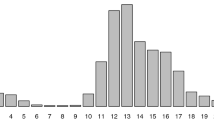Abstract
For the purpose of short-term forecasting of high ozone concentration episodes stochastic models have been suggested and developed in the literature. The present paper compares the quality of forecasts produced by a grey box and a component time-series model. The summer ozone patterns for three European urban areas (two continental and one mediterranean) are processed. By means of forecast performance indices according to EC and WHO guidelines, the following features of the models could be found: The grey box model is highly adaptive and produces forecasts with low error variance that increases with the time horizon of forecast. The component model is more 'stiff' that results in a higher forecast-error variance and poorer adaption in detail. The forecast horizon, however, could be enlarged with this model. The accuracy of predicting threshold exceedance is similar for both models. This can be understood from the assumption of a cyclical time development of ozone that was made for both models.
Similar content being viewed by others
References
Finzi, G. and Tebaldi, G.: 1982, 'A mathematical model for air pollution forecast and alarm in an urban area', Atmospheric Environment 16, 2055.
Finzi, G., Bonelli, P., and Bacci, G.: 1984, 'A stochastic model of surface wind speed for air quality control purposes', Journal of Climate and Applied Meteorology 23, 1354.
Finzi, G., Volta, M., Nucifora, A., and Nunnari, G.: 1998, 'Real time ozone forecast: a comparizon between neural network and grey box models', International ICSC/IFAC Symposium on Neural Computation, Wien, Sept. 23-25.
Harvey, A.C.: 1992, 'Forecasting, Structural Time Series Models and the Kalman Filter', Cambridge University Press, Cambridge, 1992.
Kendall, M. and Ord, J.K.: 1993, 'Time Series', Edward Arnold.
Ng, C.N., and Young, P.C.: 1990, 'Recursive Estimation and Forecasting of Non-stationary Time Series', Journal of Forecasting 9, 173.
Schlink, U., Herbarth, O., and Tetzlaff, G.: 1997, 'A component time-series model for SO2 data: forecasting, interpretation and modification', Atmospheric Environment 31(9), 1285.
Schlink, U., Herbarth, O., Richter, M., Rehwagen, M., Puliafito, J.L., Puliafito, E., Puliafito, C., Guerreiro, P., Quéro, J.L., and Behler, J.C.: 1999, 'Ozone-Monitoring in Mendoza, Argentina: initial results', Journal of the Air &; Waste Management Association 49, 82.
Slutzky E.: 1927, 'The summation of random causes as the source of cyclic processes' (Russian), Problems of Economic Conditions 3, 1; English translation in Econometrica (1937), 5, 105.
Young, P.C., Ng, C.N., Lane, K., and Parker, D.: 1991, 'Recursive forecasting, smoothing and seasonal adjustment of non-stationary environmental data', Journal of Forecasting 10, 57.
Yule, G.U.: 1927, 'On a method of investigating periodicities in disturbed series, with special reference to Wölfer's sunspot numbers', Phil. Trans. A226, 267.
Author information
Authors and Affiliations
Rights and permissions
About this article
Cite this article
Schlink, U., Volta, M. Grey Box and Component Models to Forecast Ozone Episodes: A Comparison Study. Environ Monit Assess 65, 313–321 (2000). https://doi.org/10.1023/A:1006496205139
Issue Date:
DOI: https://doi.org/10.1023/A:1006496205139




